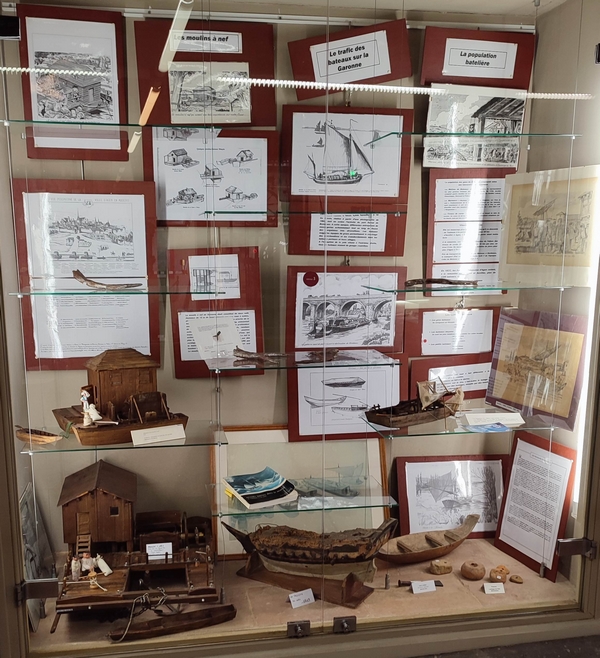
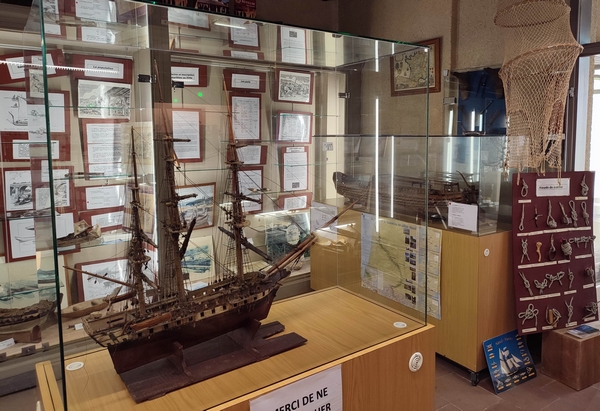
Saint Catherine’s Chapel, a story of the boatmen
From the beginning of history until the middle of the 19th century, the River Garonne facilitated not only the exchange of goods, but also the contact between people.
The origin of the port of Auvillar is without doubt an ancient tollgate which was known to exist in that spot in 1204. In 1789 the community of Auvillar counted 49 families of sailors.
These sailors, absolute professionals of the inland waterway system, were men full of energy; audacious and calm, they had a perfect knowledge of the river and enjoyed its challenges when they presented themselves.
Their motto was:
“I am wicked on land, but a gentleman on the water”.
They lived 12 to 16 hours a day on the boats and when night fell they slept in the ‘Auberges’ on the riverbanks.
Auvillar was renowned for its ‘auberges’ and they always halted here because the toll was obligatory.
The sailors of the sea, like those known as the waterway boatmen, had their own particular church in each port. Almost all these chapels were dedicated to Saint Catherine, the patron saint of the river and its philosophical thinking.
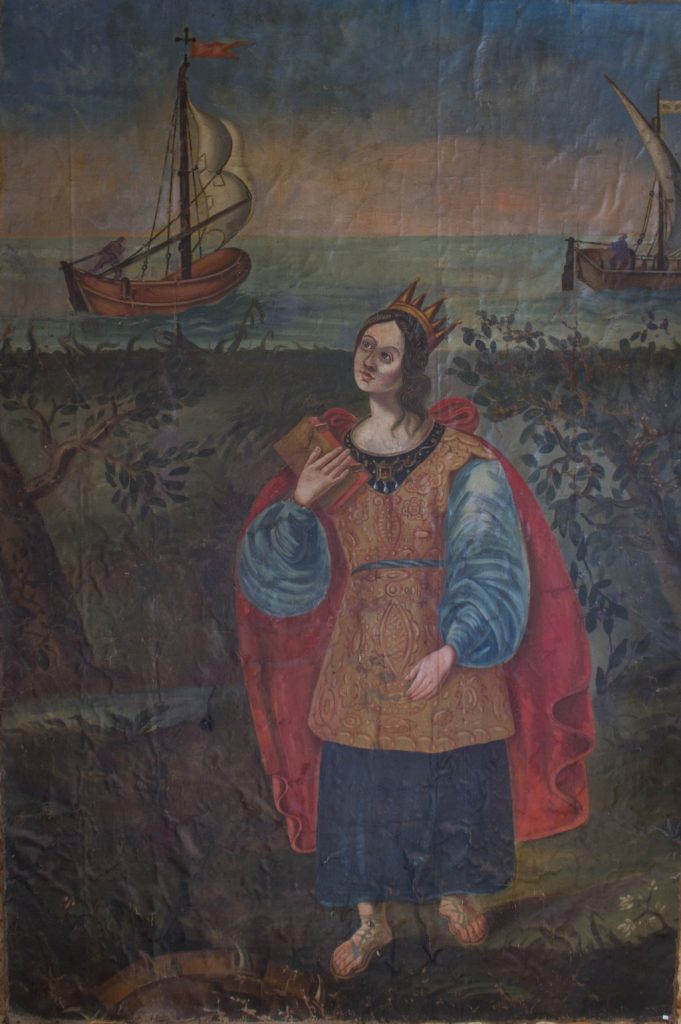
The church of the port of Auvillar
The sailors church dates, in all likelihood, from the ‘Carolingian’ period. It is still possible to see, above the porch on the outside, a monogram of Christ from the 9th century. This sign of Christ is an important symbol of primitive churches.
There you will find, particularly, the Greek symbols α and ω (alpha and omega) (the beginning and the end) and the two first letters of Christ, in Greek X P.)

This monogram, whose powerful symbol was lost during the passage of time, was reconstructed during the winter of 2009/2010 under the guidance of the ‘Bâtiment de France’. The original sign of Christ had weathered and deteriorated too much! The framework of the building was entirely restored as well.
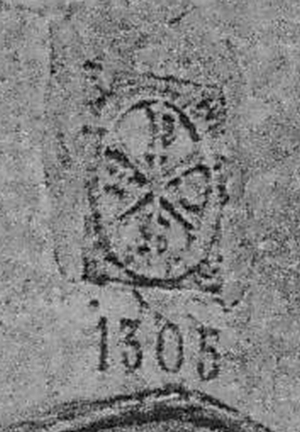
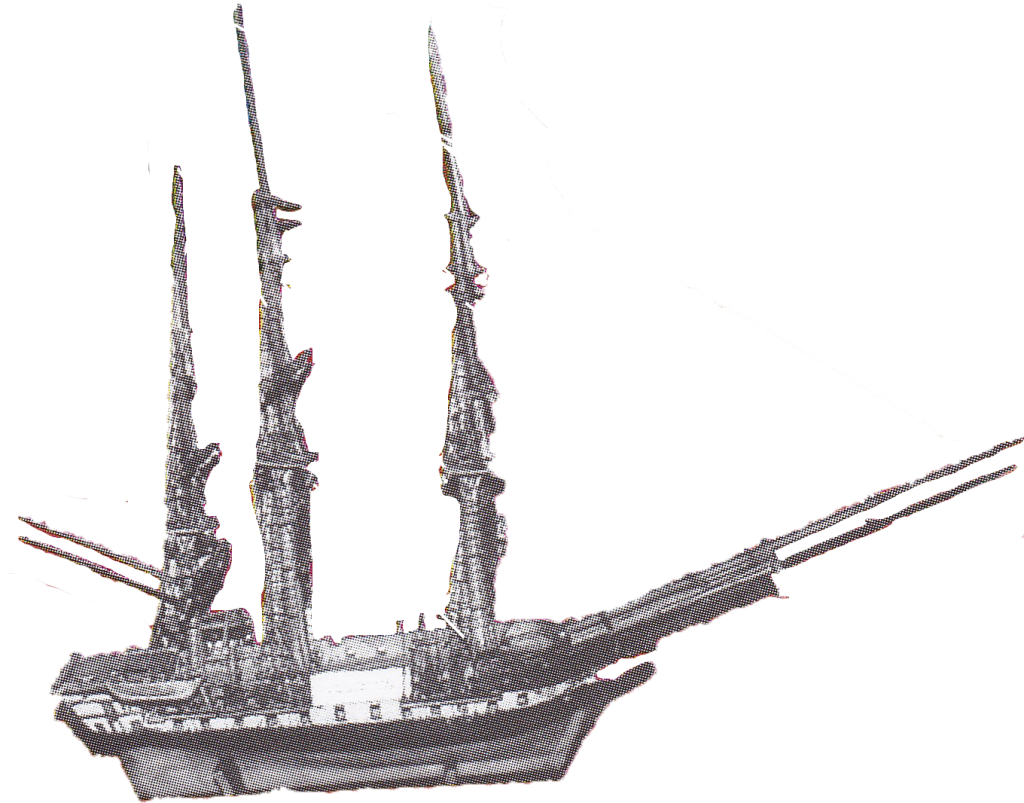
The sailors donated offerings to their protector Saint. They bought or made themselves these gifts. A number of these were found in the Chapel, most of them representing the vessels of war. The Auvillar Museum has carefully preserved these. They also exhibit a picture of Saint Catherine of Alexandria that was found in the old Chapel.
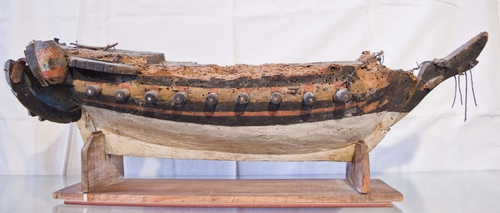
For the most part the murals are dated from the 18th century. Their state of conservation is remarkable given the small amount of maintenance they received.
However, the flaking rendering placed there shows glimpses of more ancient paintings underneath, which may have been executed in the 14th century.
In this photo, one can see a seated person on a throne: parts of which are showing painted designs of mystical animals.
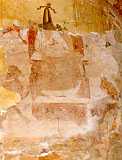
The Maritime Inscription
Jean-Baptiste Colbert (1619-1683) was the founder of the French Merchant Marine. Many of the boats were constructed from decimated woods of the Perigord and the pine forests of the Pyrenees. At the same time they needed men to man the boats. It was from this time the Maritime Inscription was created, at the end of naval military service. Citizens of Auvillar took part in the American campaign between 1790 and 1792. When, in the 18th century, the war needs of the navy decreased, the sailors turned to sea trading. The development of the West Indies colonies made Bordeaux the most important port for embarkment.
The Mill on the River
Until the 17th century flour-milling was not just a local industry comprising of a number of mills scattered about the countryside. Mills often follow two models: ‘Moulin de Pech’ – (mill high up) and ‘Moulins à Nef’ (mills on the river). In particular, there were river mills in the little valleys of the Arratz river. After that time, the middle Garonne became well-known for wheat and the Garonne became the river of the Mills on water. The origin of the river mills came from the 1st century. In the Middle Ages most of the larger French and European rivers welcomed the boat-mills. The river mills consisted of two ‘nefs’ (boats 12 metres long) separated by a paddle wheel, turned by the current. The river mills were to be found on the navigation route and interrupted the passage of boats. There were many accidents. From 1792 the mooring and repairing of the river mills were the subject of a number of arrests. From the 5th of May 1835, the bridges and the roadways were forbidden for the repair of mills and the mills finally disappeared.
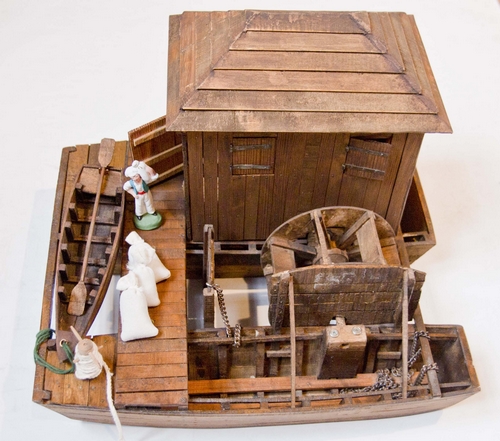
The Port of Auvillar
Ports are known as “crossings” or “slipways” or simply “port”. They are in two categories; those which are for traffic and those where the people of the river trade. Auvillar is of the second category. In 1789 there were 49 families of sailors. Originally the port of Auvillar was an old toll called “place of carnival” or “crossing”. This toll was in existence in 1204. The Viscounts had authorisation to level the right of their status on the goods carried by foreigners into the town, or only passing through the port of Auvillar. Certain Viscounts set up ambushes with many armed men on boats across the river. A certain number of Garonne tolls were situated not far from the site of a chateau. The toll of Auvillar was sited under the chateau of Viscounts who dominated the area of the large river for a certain number of metres. The origin of the Lordships, like Auvillar, tie in with the institution of the tolls, which followed the fortunes of the Viscount of Auvillar and the Lomagne.

The ferries on the Garonne
The owners of the ferries were called the ‘fermiers’. They were not allowed to transport more than 50 people. The use of the ferry could not take place between sunset and sunrise. For sure the unpredictable changes of current and water level of the Garonne upset many trips from one bank to the other.
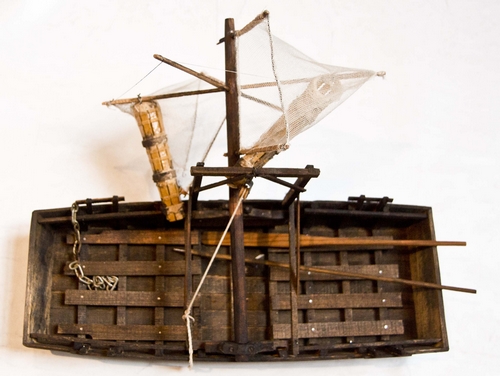
The Bridge over the Garonne
The unstable nature of the Garonne, the absence of solid banks and the width of the flood plain made difficulties for the construction of bridges. The Garonne was known as a river without bridges. There was not a single bridge from Bordeaux to Toulouse. The community of Auvillar were appealed to by the society of makers of iron bridges in 1841 to construct a suspension bridge to replace the existing ferryboat. It was necessary to have the right to a toll bridge for 49 years to help defray the costs of the construction. The ferry ceased operations in July 1845 when the bridge came into service. The bridge suffered serious damage in 1856 and 1857 and was subject to numerous repairs. It was in use until until 1939 when it was replaced by the bridge you see today.
Translate by Christine & Nigel Macallister